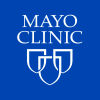预约演示
更新于:2025-05-07
Microvascular Angina
微血管心绞痛
更新于:2025-05-07
基本信息
别名 Angina Pectoris with Normal Coronary Arteriogram、Angina Syndrome X、Angina Syndrome Xs + [37] |
简介 ANGINA PECTORIS or angina-like chest pain with a normal coronary arteriogram and positive EXERCISE TEST. The cause of the syndrome is unknown. While its recognition is of clinical importance, its prognosis is excellent. (Braunwald, Heart Disease, 4th ed, p1346; Jablonski Dictionary of Syndromes & Eponymic Diseases, 2d ed). It is different from METABOLIC SYNDROME X, a syndrome characterized by INSULIN RESISTANCE and HYPERINSULINEMIA, that has increased risk for cardiovascular disease. |
关联
14
项与 微血管心绞痛 相关的药物作用机制 P2Y12 receptor拮抗剂 |
原研机构 |
最高研发阶段批准上市 |
首次获批国家/地区 欧盟 [+3] |
首次获批日期2010-12-03 |
靶点 |
作用机制 Nav1.5阻滞剂 |
最高研发阶段批准上市 |
首次获批国家/地区 美国 |
首次获批日期2006-01-27 |
靶点 |
作用机制 ETA拮抗剂 |
在研机构 |
原研机构 |
最高研发阶段临床2期 |
首次获批国家/地区- |
首次获批日期1800-01-20 |
171
项与 微血管心绞痛 相关的临床试验NCT05793567
Assessment of Microcirculatory Function in Type 2 Myocardial Infarction
The purpose of this research is to find out if patients with Type 2 Myocardial Infarction (T2MI) without significant epicardial coronary artery disease (CAD) have a greater chance of having coronary microvascular disease (CMD).
开始日期2025-07-01 |
申办/合作机构 |
NCT06898541
Impact of the Coronary Sinus Reducer on Coronary Flow Reserve and Symptoms in Patients With Coronary Microvascular Disease
Coronary microvascular dysfunction (CMD) is a common cause of treatment- resistant angina that lacks evidence-based treatment options. The coronary sinus reducer (CSR) is an hourglass-shaped stainless steel mesh, designed to create a controlled narrowing of the coronary sinus (CS). By augmenting CS pressure, CSR implantation was shown to improve myocardial perfusion, potentially providing a novel treatment for patients with CMD. REDUCE CMD is a placebo-controlled study of CSR in 50 patients with CMD. The main study endpoints are the change in coronary flow reserve from baseline to 6 months in the CSR-arm versus the placebo arm, and the difference in number of daily episodes of angina recorded on the ORBITA-app at 6 month follow-up in the CSR-arm versus the placebo arm.
开始日期2025-05-01 |
申办/合作机构 |
ITMCTR2025000514
Optimized Integrated Traditional Chinese and Western Medicine Protocol Research for Angina with Non-obstructive Coronary Arteries
开始日期2025-04-01 |
申办/合作机构 |
100 项与 微血管心绞痛 相关的临床结果
登录后查看更多信息
100 项与 微血管心绞痛 相关的转化医学
登录后查看更多信息
0 项与 微血管心绞痛 相关的专利(医药)
登录后查看更多信息
2,386
项与 微血管心绞痛 相关的文献(医药)2025-05-01·Computers in Biology and Medicine
Bioinformatics-focused identification of metabolomic Markers in coronary microvascular disease
Article
作者: Liu, Wenting ; Su, Pixiong ; Su, Qing ; Liu, Xiaoyan ; Xie, Boqia
2025-04-01·Catheterization and Cardiovascular Interventions
The Prevalence of Coronary Microvascular Dysfunction in Patients With Type 2 Diabetes Mellitus
Review
作者: Sawant, Vaishnavi ; Waksman, Ron ; Zhang, Cheng ; Frisancho, Flavia Tejada ; Kumar, Sant ; Hashim, Hayder D. ; Merdler, Ilan ; Rahman, Sana ; Chitturi, Kalyan R. ; Cermak, Vijoli ; Cellamare, Matteo ; Case, Brian C. ; Ozturk, Sevket Tolga ; Verma, Beni Rai ; Ben‐Dor, Itsik
2025-04-01·JACC: Heart Failure
Association of Histologic Findings With Long-Term Outcomes in Symptomatic Obstructive Hypertrophic Cardiomyopathy Patients Undergoing Surgical Myectomy
Article
作者: Thamilarasan, Maran ; Xu, Bo ; Ospina, Susan ; Smedira, Nicholas ; Gaballa, Andrew ; Popovic, Zoran B ; Desai, Milind Y ; Jadam, Shada ; Alashi, Alaa ; Tan, Carmela D ; Rodriguez, E Rene
17
项与 微血管心绞痛 相关的新闻(医药)2024-10-28
Demonstrated a Reduction of Symptoms with Short Procedural and Recovery TimesLeading Coronary Physiology Experts Appointed Co-Principal Investigators for Planned U.S. Early Feasibility Study
SANTA CLARA, Calif., Oct. 28, 2024 /PRNewswire/ -- VahatiCor, a leader in cardiovascular innovation, is proud to announce the successful completion of its compassionate use study treating patients with the A-FLUX Reducer System™ for either obstructive coronary artery disease with persistent symptoms or symptomatic coronary microvascular dysfunction (CMD). The study, in which ten patients were implanted with A-FLUX (four with CMD and six with obstructive epicardial disease), marks a significant milestone in demonstrating the safety and early efficacy of a promising therapeutic option for patients suffering from these challenging and debilitating conditions.
Continue Reading
Based on the positive results from the compassionate use study, the Company plans to commence SERRA-I, its U.S. early feasibility study (EFS) exclusively focused on CMD patients. Coronary physiology experts Samit Shah, MD, PhD, FACC, FSCAI, an interventional cardiologist from the Yale School of Medicine, and Tim Van de Hoef, MD, PhD, FESC, an interventional cardiologist from University Medical Center Utrecht, the Netherlands will lead the trial as co-principal investigators. The A-FLUX Reducer System offers a novel, minimally invasive approach to directly improve flow within the coronary microvasculature and relieve anginal symptoms in patients with CMD.
The A-FLUX Reducer System has innovative properties, including its atraumatic expansion and repositionable design.
Post this
"Our compassionate use study demonstrated the safety of the implant and a sustained therapeutic potential for the A-FLUX Reducer System with significant reductions in anginal symptoms," said Marwan Berrada-Sounni, Founder and Chairman, VahatiCor. "We are excited to address the unmet clinical needs of CMD patients and delighted to take the next step in initiating the SERRA-I EFS, upon FDA IDE approval, with Dr. Shah and Dr. Van de Hoef so that we can bring this important therapy to patients."
Patients treated with the A-FLUX Reducer System reported rapid symptom improvements and returned to their daily activities with minimal recovery time. The short nine-minute average implantation procedure time and clinical outcomes highlighted the implant's potential to become a frontline device therapy for patients with persistently symptomatic CMD.
"Patients with CMD, which is more common in women, experience significant symptoms that can happen at rest and during exertion," noted Dr. Shah. "There is a real need for an effective treatment for these patients. The A-FLUX Reducer System has innovative properties, including its atraumatic expansion and repositionable design. I look forward to supporting the development of clinical evidence for this novel therapy."
The A-FLUX Reducer System is engineered with SwiftCell Technology™, a small-cell proprietary design based on computational modeling, to redistribute oxygen supply to the sub-endocardium layer of the heart muscle. As Dr. Van de Hoef explained, "About half of the patients undergoing an invasive angiography are found not to have obstructive coronary artery disease but, in fact, have coronary microvascular disease. Increasingly, more patients are likely to be identified as centers begin adopting the strong guidelines recently published by the European Society of Cardiology. These patients have no dedicated treatment available. Coronary sinus reduction and the advanced features of the A-FLUX device carry significant potential to help these patients return to normal daily activities."
CMD occurs when the small coronary arteries within the heart muscle (coronary microvasculature) fail to dilate properly upon exertion, reducing blood flow to the heart muscle and creating discomforting angina symptoms. Millions of CMD patients worldwide suffer from persistent chest pressure, tightness, and chest pain, with no current viable options for symptom relief. Left untreated, diagnosis of CMD results in a fourfold elevated mortality risk compared to the general population.[1]
About VahatiCor
VahatiCor, Inc., a T45 Labs portfolio company, is committed to revolutionizing the treatment of coronary microvascular dysfunction through cutting-edge technologies and minimally invasive therapies to provide rapid relief and empower patients to reclaim their daily lives.
To learn more, please visit : Investigational Device. Limited by Federal (or US) law to investigational use only.
Not available for sale.
[1] Gdowski MA, Murthy VL, Doering M, Monroy-Gonzalez AG, Slart R, Brown DL. Association of Isolated Coronary Microvascular Dysfunction With Mortality and Major Adverse Cardiac Events: A Systematic Review and Meta-Analysis of Aggregate Data. J Am Heart Assoc. 2020 May 5;9(9):e014954. doi: 10.1161/JAHA.119.014954. Epub 2020 Apr 29. PMID: 32345133; PMCID: PMC7428565.
SOURCE VahatiCor, Inc.
WANT YOUR COMPANY'S NEWS FEATURED ON PRNEWSWIRE.COM?
440k+
Newsrooms &
Influencers
9k+
Digital Media
Outlets
270k+
Journalists
Opted In
GET STARTED
临床研究AHA会议
2024-06-05
New research has linked multiple types of per- and polyfluoroalkyl substances (PFAS, also known as 'forever chemicals') with increased risk of cardiovascular diseases in postmenopausal women. Specifically, the study reveals how PFAS chemicals interact with pro-inflammatory pathways in older women, providing potential explanations for the increased risk.
New research from the University of Illinois Urbana-Champaign has linked multiple types of per- and polyfluoroalkyl substances (PFAS, also known as "forever chemicals") with increased risk of cardiovascular diseases in postmenopausal women. Specifically, the study reveals how PFAS chemicals interact with pro-inflammatory pathways in older women, providing potential explanations for the increased risk.
"Previous research suggests PFAS exposures may play a role in the development of cardiovascular disease during the menopause transition, but the biological mechanisms were not well understood," said lead study author Alicia Arredondo Eve, a postdoctoral researcher in the Department of Food Science and Human Nutrition (FSHN) in the College of Agricultural, Consumer and Environmental Sciences (ACES) at Illinois. "We focused on specific PFAS chemicals as well as the cardiovascular diseases that are more common in older women."
It's difficult to escape PFAS. The man-made chemicals coat nonstick pans, waterproof clothing, food wrappers, receipts, and many more items we come in contact with daily, not to mention being present in much of our water supply. Some forms -- and there are thousands of chemical variants -- could persist in the environment for hundreds or thousands of years, hence their "forever chemicals" moniker.
Not surprisingly, studies suggest nearly all Americans carry PFAS in their blood and other bodily tissues. But premenopausal women are a little better off. Thanks to childbirth, breastfeeding, and their monthly menstrual cycle, premenopausal women expel more PFAS than men and postmenopausal women. After menstruation stops, PFAS accumulates and can cause problems.
Scientists are still piecing together exactly what PFAS chemicals do in the body, but they appear to disrupt hormone signaling, interfering with normal reproductive and cardiovascular function. Most PFAS studies have focused on men or women during their reproductive years, but Arredondo Eve and co-author Zeynep Madak-Erdogan say postmenopausal women experience unique cardiovascular issues.
Motivated to fill the knowledge gap, the researchers analyzed data and samples from 70 postmenopausal women in Turkey. About a third of the women had been diagnosed with coronary artery disease, the world's leading form of heart disease. Another third had coronary microvascular disease, which is common in postmenopausal women. The remaining third had no sign of heart disease.
All of the samples were tested for the presence and levels of two long-chain "legacy" PFAS (no longer manufactured in the U.S.) -- PFOS and PFOA -- and a newer short-chain PFAS chemical known as PFBS. Next, the researchers used complex machine-learning techniques to analyze the relationships between the PFAS and various blood metabolites and proteins.
"When you have multiple factors and you want to focus on one or two, machine learning techniques are very efficient in reducing that number," said Madak-Erdogan, an associate professor in FSHN. "We found PFOS was closely associated with coronary artery disease, while PFOA was more predictive of coronary microvascular disease."
Further, the two chemicals interacted with proteins and pathways associated with inflammation. Chronic inflammation, triggered by stress, poor diet, infections, or other causes, is a risk factor for both coronary artery and coronary microvascular disease. While interactions with inflammatory pathways weren't a surprise given the diseases in question, an unexpected pattern emerged.
"The PFAS we studied affected the abundance of circulating pro-inflammatory factors differently. We did not expect that," Arredondo Eve said. "PFOA and PFOS aren't that different in terms of their chemical structure. Our results show you can't lump all PFAS together."
Higher levels of PFOA, which predicted coronary microvascular disease, were associated with higher levels of amino acids isoleucine and leucine and higher levels of pro-inflammatory cytokines. On the flipside, higher PFOS, related to coronary artery disease, was associated with lower isoleucine and leucine levels.
In addition to these opposing effects on metabolites, each PFAS was associated with a distinct set of pro-inflammatory proteins. The researchers say further preclinical research is needed to understand the mechanistic basis of these differences.
Ultimately, the study corroborates earlier research linking exposure to PFAS with cardiovascular disease in postmenopausal women, providing hints at how the chemicals interact with pro-inflammatory processes in the body. Unfortunately, the authors say there's not much women can do to get rid of PFAS after they get into the body. Instead, they caution women to avoid prolonged exposure by choosing PFAS-free clothing, cookware, and other materials.
"We need more education as to how we can reduce our exposure to PFAS," Madak-Erdogan said. "There also needs to be more action to regulate and mitigate these chemicals getting into the environment."
The team plans to continue studying the effects of PFAS on women's health.
AHA会议
2024-05-13
·梅斯医学
自2017年,中华医学会心血管病学分会基础研究学组、介入心脏病学组、女性心脏健康学组以及动脉粥样硬化和冠心病学组编写了国际上第一部“冠状动脉微血管疾病(CMVD)诊断和治疗的中国专家共识”以来,国际上关于CMVD的共识文件迅速增加,例如2019年,AHA发表了MINOCA诊断和治疗的科学声明,指出微血管性心绞痛、微血管痉挛和冠脉慢血流是MINOCA的重要病因。2020年,欧洲经皮心血管介入协会(EAPCI)和ESC联合发布了冠状动脉非阻塞性心肌缺血(INOCA)的共识性文件,提出CMVD和/或心外膜下冠脉痉挛是INOCA 的主要病因。2020年,ESC发表了心血管疾病中冠状动脉微血管功能异常的立场文件,将微血管性心绞痛归纳为慢性冠脉综合征的重要类型,提出了相应的诊断和治疗策略。尽管部分文件对CMVD的诊断和治疗提出了初步建议,但并未提供推荐分类和证据等级。2023版中国专家共识总结CMVD近年进展,更新旧版共识中过时的观点,规范CMVD诊断和治疗,以及凝练科学问题和研究方向。近日,在2024长安国际心血管病论坛(CIC2024)上,来自山东大学齐鲁医院的张运院士对《冠状动脉微血管疾病诊断和治疗的中国专家共识(2023版)》进行详细解读,该共识提出了新的CMVD分类,,推荐诊断途径、标准及治疗策略。本文梳理重点内容,以分享各位同道。CMVD的定义冠状动脉微血管疾病(coronary microvascular disease,CMVD)是指在动脉粥样硬化性和非动脉粥样硬化性致病因素的作用下,冠状前小动脉、小动脉和毛细血管的结构和功能异常所导致的急性和慢性心肌缺血的临床综合征。CMVD的临床分型心肌缺血相关的CMVD:冠状动脉阻塞性心肌缺血(IOCA)相关的CMVD冠状动脉非阻塞性心肌缺血(INOCA)相关的CMVD心肌梗死相关的CMVD:冠状动脉阻塞性心肌梗死(MIOCA)相关的CMVD冠状动脉非阻塞性心肌梗死(MINOCA)相关的CMVD血运重建相关的CMVD:急诊PCI相关的CMVD择期PCI手术相关的CMVDCABG相关的CMVD非动脉粥样硬化心脏病相关的CMVD:合并心肌肥厚的CMVD不合并心肌肥厚的CMVD冠状动脉血流的调节机制冠脉血流量是指心脏冠状动脉血液在单位时间内的流量。影响冠脉血流量大小的主要因素是心肌的活动。此外,神经和激素对冠状动脉血流量也具有一定的调节作用。调节冠脉血流量的因素主要有物理因素、代谢因素、神经体液因素和自身调节。其中最重要的是代谢因素,即心肌本身的代谢水平。不同冠脉节段的血管舒缩受不同机制调节:血流介导的血管扩张:主要发生在心外膜下冠状动脉和前小动脉;冠脉血流自动调节:机制可能为前小动脉远端的肌源性反应,即冠脉灌注压上升时前小动脉收缩,反之则扩张;心肌耗氧量:心肌耗氧量增加时,冠脉阻力血管可充分扩张以满足心肌的需求,称为功能性充血,NO、前列环素、内皮素等参与调节;心肌代谢产物:当心肌缺血缺氧时,代谢产物的堆积首先使冠状小>动脉扩张,冠脉阻力和前小动脉的压力下降,触发冠脉的肌源性反应,血管进一步扩张,触发血流介导的血管扩张,使心外膜下的冠脉和较大的前小动脉扩张(级联式反应)。冠脉血流储备1974年Gould 首次提出冠脉血流储备(CFR)的概念。CFR是指冠脉接近最大程度扩张时,冠脉血流量(coronary bloodflow,CBF)或心肌血流量(myocardⅡal blood flow,MBF)与静息状态下相应指标的比值,是测量冠脉储备功能的整体指标。CFR受到4个因素的影响:静息状态的冠脉血流量(静息状态血流量增大可使CFR降低)、单位体积心肌内阻力血管的横截面积(管壁增厚可使CFR降低)、冠脉血管外的压力(室壁张力增加可使CFR降低)和冠脉灌注压(血压下降可使CFR降低)。CMVD的发病机制CMVD发病机制较为复杂,在疾病发展进程中受诸多因素影响。新共识在此方面新增了冠脉血流的调节机制、微血管阻塞,同时对冠脉微循环结构和功能异常方面的机制进行了更新。1、冠状动脉微血管结构异常:遗传因素(RAAS、过氧化物酶体增殖物激活受体及内皮素等基因的多态性);血流动力学因素(持续血压升高引起的剪切力变化);神经体液机制(高血压状态下RAAS激活、细胞因子、黏附分子及内皮素等高表达以及炎性细胞积聚)。2、冠状动脉微血管阻塞(microvascular obstruction,MVO)3、冠状动脉微血管功能异常:内皮依赖性血管舒张异常非内皮依赖性血管舒张异常微血管痉挛心脏交感神经元功能障碍评价冠脉微血管功能的血管活性药物通过检测冠脉微血管对血管扩张剂的反应来评估其功能,常用指标是CFR。1、内皮非依赖型血管扩张剂:主要作用于血管平滑肌细胞腺苷:静注剂量140μg/Kg/min,冠脉内注射剂量2-16μg/Kg/min,注射时间1.5-6分钟。常见的副作用有AVB、SAB、支气管痉挛。半衰期仅10秒,副作用可很快消失。双嘧达莫:通过抑制腺苷降解而发挥作用,药理作用类似于腺苷。静注剂量0.56-0.84 mg/Kg。应用腺苷或双嘧达莫后CFR<2.5提示冠脉微血管舒张功能异常,临床上推荐CFR<2.0作为判断微血管功能障碍的临界值。2、内皮依赖型血管扩张剂:主要作用于血管内皮细胞乙酰胆碱的双重性:刺激内皮细胞释放NO扩张血管,结合毒碱样乙酰胆碱受体刺激平滑肌细胞收缩血管。内皮功能正常时,乙酰胆碱的扩血管作用占主导地位,但如出现内皮功能异常乙酰胆碱的缩血管作用占优势,从而导致血管痉挛。用法和用量:乙酰胆碱稀释后冠脉内递增式注射,注射1分钟后行冠脉造影,利用定量造影法测量冠脉内径以明确有痉挛,同时观察心绞痛症状和心电图变化。如注射后未见心外膜下冠脉痉挛但出现心绞痛症状和缺血型ST-T改变,可诊断为CMVD,同时应立即冠脉内注射硝酸甘油或尼可地尔以对抗冠脉微血管痉挛。瑞加诺生:选择性激活腺苷A2A受体使冠脉扩张,增加冠脉血流量,具有选择性扩张冠脉和起效迅速的特点。用法和用量:10秒内一次性固定剂量弹丸式快速静脉注射给药,0.4 mg/5 ml。尼可地尔:硝酸酯类和腺苷三磷酸敏感性钾通道开放剂,激活细胞内的鸟苷酸环化酶,松弛血管平滑肌,兼具舒张心外膜动脉及冠脉微血管的功能。用法和用量:冠脉内弹丸式注射2~4 mg,作用效果及维持心肌最大充血状态的持续时间存在一定的剂量依赖性。CMVD的诊断CMVD的临床表现多样、机制复杂,且常规药物疗效有限,因此早期检出CMVD具有十分重要的临床意义。新共识更新了评价冠脉微血管功能的相关内容,指出诊断流程,同时整理了各亚类疾病的临床表现和诊断标准。临床评价冠状动脉微血管功能的检查主要包括:血管活性药物试验、无创伤性诊断技术和创伤性诊断技术等三类:血管活性药物试验:除了腺苷、双嘧达莫、乙酰胆碱,共识新增了腺苷A2A受体选择性激动剂Regadenoson和尼可地尔。无创伤性诊断技术:经胸超声冠脉血流显像(TTDE)、心肌声学造影(MCE)、单光子发射计算机断层成像(SPECT)、正电子发射型计算机断层显像(PET)、心脏磁共振成像(CMR)、CT灌注扫描(CTP)。 1)经胸多普勒超声(TTDE):测量LAD近端分支的血流速度,诊断标准CFVR<2 2)心肌声学造影(MCE):检测负荷后与负荷前的心肌血流量(MBF),诊断标准CFR<2 3)单光子发射断层扫描(SPECT):检测负荷后与负荷前的心肌血流量(MBF),诊断标准CFR<2 4)正电子发射断层扫描(PET):检测负荷后与负荷前MBF,诊断标准CFR<2 5)心脏核磁共振(CMR):测量负荷后与负荷前MBF,计算心肌灌注储备指数(MPRI),诊断标准MPRI<2 6)CT灌注显像(CTP):诊断标准心肌灌注储备MPR<2诊断CMVD无创性技术的推荐创伤性诊断技术:冠脉造影、冠脉内温度-压力测量、冠脉内多普勒流速测量、冠脉痉挛诱导试验。 1)选择性冠状动脉造影(CAG):TIMI血流分级:诊断标准TIMI分级≤2TIMI血流计帧法(TFC):诊断标准TFC>25帧TIMI心肌显影分级(TMBG),分为0-3级心肌显影密度分级(MBG),分为0-3级TIMI心肌灌注帧数(TMPFC):我国学者提出 2)温度稀释法:弹丸注射温度稀释法:诊断标准微血管阻力指数(IMR)>25连续温度稀释法:诊断标准微血管阻力储备(MRR)<2.1 3)冠状动脉内多普勒流速法:CFR<2.5,充血性微血管阻力(HMR)>1.7 mmHg/cm/s诊断CMVD有创技术的推荐图:CMVD诊断流程图CMVD的临床表现和诊断标准(一)心肌缺血相关的CMVD(1)INOCA相关的CMVD:也称原发性稳定性微血管心绞痛(MVA)临床表现:持续心肌缺血的症状,冠脉血流储备较低或有微血管痉挛的实验室证据,但没有心外膜冠脉的阻塞性病变。主要症状是劳力性胸痛,与严重冠脉狭窄患者的胸痛很难区分。以下特征提示CMVD:女性常见,大多数发生在绝经后;大多数患者经历分娩引起的胸痛,极少数在休息时出现胸痛;胸痛单次发作持续时间较长,50%以上发作持续10 min以上,停止运动后不适持续数分钟;硝酸甘油对胸痛无效,甚至使胸痛加重。诊断标准:典型的心肌缺血临床症状;具有至少一项心肌缺血的客观证据(心电图ST段压低、心肌负荷SPECT示可逆性心肌灌注缺损、多普勒超声检测CFR减低(<2.0)、CMR检测MPRI减低(<2.0)、PET检查发现有心肌缺血的代谢性证据;冠脉造影正常、管壁不规则或管腔狭窄≤50%;如临床高度疑诊CMVD但CFR≥2.0,可在严密监护下冠脉内注射乙酰胆碱进行负荷试验,如心外膜下冠脉无痉挛但出现心绞痛症状和心电图缺血型ST-T改变可确诊CMVD;排除非心源性胸痛和其他心脏病如变异性心绞痛、心肌病、心肌炎或心脏瓣膜病。(2)IOCA相关的CMVD临床表现:CMVD和心外膜冠脉阻塞性病变共同导致心绞痛症状;患者可能经历长时间的心绞痛发作;触发心绞痛的体力活动闽值具有高度变异性;舌下含服硝酸甘油无效;心绞痛的严重程度往往超过冠脉狭窄程度所预期的程度。诊断标准:典型的心肌缺血症状;PCI成功后早期负荷试验仍呈阳性;解除心外膜冠脉狭窄病变后,CFR<2.0或冠脉内乙酰胆碱激发试验后心外膜下冠脉无痉挛但出现典型心绞痛和心电图缺血型ST-T改变;择期 PCI患者,TIMI血流分级<3级和(或)TMPG<3级;PCI 后出院前 SPECT 显像显示心肌局部无灌注区或CMR显像显示心肌灌注缺损或延迟钆强化。(二)心肌梗死相关的CMVD(1)MINOCA相关的CMVD临床表现:休息或清晨时反复出现胸痛,以及轻度体力活动诱发的胸痛,可能持续1~2小时,硝酸甘油无效,胸痛发作时或动态心电图可记录到缺血和动态ST-T变化诊断标准;NSTEMI的临床表现;CMVD的实验室证据:CFR<2.0或CFR≥2.0但冠脉微血管痉挛试验阳性排除心外膜下阻塞性和痉挛性冠脉病变、一过性冠脉血栓形成、心肌病变或其他心血管疾病。(2)MIOCA相关的CMVD临床表现:成功PCI后发生CMVD相关的心绞痛,并伴有左室重构、心功能减退和心血管事件。诊断标准:具有冠脉阻塞性病变;CMVD的实验室证据;成功PCI后无创评估:SPECT显示心肌局部无灌注区,MRI显示心肌灌注缺损或延迟钆强化;成功PCI后有创评估:TIMI血流分级0-2级和/或TMBG 0-2级;IMR>40。(三)血运重建相关的CMVD(1)急诊PCI相关的CMVD临床表现:在接受直接PCI治疗的STEMI患者中,MVO的发生率为5%~50%。诊断标准:PCI术后TIMI血流分级0~2级;PCI术后TIMI心肌灌注分级0~2级;PCI术后90分钟心电图ST段抬高回落<50%;出院前SPECT显示局部心肌无灌注区,MRI显示心肌灌注缺损或延迟钆强化。(2)择期介入治疗相关的CMVD临床表现:PCI术后肌钙蛋白升高,心绞痛复发,发生MACE、死亡、MI和再次PCI的风险增加。诊断标准:成功PCI后仍有心绞痛症状;PCI术后冠脉内多普勒超声测量CFR<2.0;PCI术后即刻测量IMR≥25;CMR显示心肌灌注缺损或延迟钆强化。(3)CABG相关的CMVD临床表现:CABG术后反复发生心绞痛,在大多数情况下应考虑合并CMVD;心脏移植受者的异体冠脉血管病变中CMVD也很常见,它独立于心外膜冠状动脉病变,且与死亡风险有关。诊断标准:CABG术后反复发生心绞痛;实验室检查:CFR<2.0;CMR显示心肌灌注缺损或延迟钆强化。(四)非动脉粥样硬化心脏病相关的CMVD(1)合并心肌肥厚的CMVDHCM、Fabry病、心脏淀粉样变、主动脉瓣狭窄等原发病表现;CMVD的实验室证据。(2)不合并心肌肥厚的CMVD应激性心肌病、扩张型心肌病、 HFpEF、糖尿病心肌病等原发病表现;CMVD的实验室证据。CMVD治疗策略和药物(一)INOCA相关CMVD的治疗控制危险因素:高血压、高脂血症、糖尿病、血栓栓塞。改善生活方式:戒烟、减轻体重、运动、心脏康复、避免应激。CMVD分层治疗:微血管心绞痛(MVA)的治疗血管痉挛型心绞痛(VSA)的治疗MVA合并VSA的治疗MVA和VSA的鉴别:行有创压力导丝的冠脉功能检测和乙酰胆碱负荷的内皮功能试验。MVA的诊断标准:腺苷负荷试验中冠脉压力导丝测量的FFR>0.8,CFR<2.0,IMR25,HMR ≥1.9;乙酰胆碱负荷试验中患者出现心绞痛症状、心电图ST段呈缺血性改变、冠状动脉内径缩窄<90%。VSA的诊断标准:腺苷负荷试验,冠脉压力导丝测量的FFR>0.8,CFR≥2.0,IMR<25,HMR <1.9;乙酰胆碱负荷试验中患者出现心绞痛症状、心电图ST段呈缺血性改变、冠状动脉内径缩窄≥90%。MVA合并VSA的诊断标准:腺苷负荷试验中冠脉压力导丝测量的FFR>0.8,CFR<2.0,IM≥25,HMR≥1.9;乙酰胆碱负荷试验中患者出现心绞痛症状、心电图ST段呈缺血性改变、冠状动脉内径缩窄≥290%。MVA的治疗推荐(Ⅰ-Ⅱa)β受体阻滞剂(Ⅰ,A):高选择性β1受体抑制剂奈必洛尔,可增加NO释放而扩张冠脉,减轻心绞痛症状。卡维地洛同时具有α和β受体阻滞作用,对微血管病变有益。CCB(Ⅰ,B):复合型L型和T型CCB咪拉地尔,可减少冠脉慢血流患者的心绞痛发作频率;氨氯地平或贝尼地平减轻MVA症状。尼可地尔(Ⅱa,B):有效扩张冠脉微血管,对MVA效果较好。雷诺嗪(Ⅱa,B):显著减少MVA患者心绞痛症状,增加运动耐量。曲美他嗪(Ⅱa,B):显著增加INOCA合并微血管病变患者的运动耐量。ACEI/ARB(Ⅱa,B):改善CMVD患者的心绞痛症状、提高CFR。伊伐布雷定(Ⅱa,B):能够减轻INOCA患者的MVA症。中药 (Ⅱa,B):通心络改善血管内皮功能;麝香保心丸增加CFR,降低IMR。MVA的治疗推荐(Ⅱb)内皮素受体拮抗剂(Ⅱb,B):内皮素受体拮抗齐泊腾坦可改善CMVD患者的血管内皮功能。三环类药物(Ⅱb,B):阿米替林、丙咪嗪或去甲丙咪嗪。非药物治疗(Ⅱb,B):脊髓电刺激或增强型体外反搏。VSA的治疗推荐(Ⅱa-Ⅱb)CCB(Ⅱa,B):VSA的药物治疗首选CCB对于冠脉痉严重者,CCB的剂量需要加倍。硝酸酯类(Ⅱa,B):长效硝酸酯类单独或与CCB合用可缓解因VSA导致的顽固性心绞痛。尼可地尔(Ⅱa,C):通过开放ATP敏感钾离子通道,扩张微血管。Rho激酶抑制剂(Ⅱb,B):法舒地尔可抑制乙酰胆碱诱发的微血管痉挛,减少VSA发作。VSA的治疗推荐(Ⅱb-Ⅲ )磷酸二酯酶抑制剂(PDE)(Ⅱb,B):PDE3抑制剂西洛他唑可抑制腺苷降解而发挥抗血小板、抗炎和扩张血管的作用,可缓解自发性VSA或麦角碱诱发的VSA以及CCB和硝酸酯无法缓解的顽固性心绞痛。PDE5抑制剂西地那非可改善冠心病患者内皮依赖性的血管舒张功能,改善CFR、缓解心绞痛。β受体阻滞剂(Ⅲ,C):VSA患者应避免使用β受体阻滞剂,尤其是非选择性β受体阻滞剂(如普萘洛尔等)。MVA合并VSA的治疗推荐CCB(Ⅱa,B):推荐氨氯地平、维拉帕米、地尔硫卓尼可地尔(Ⅱa,B)曲美他嗪(Ⅱa,B)ACEI或ARB (Ⅱa,B)他汀类药物(Ⅱa,C)(二)IOCA相关CMVD的治疗推荐改善生活方式:健康饮食、戒烟、体育锻炼、心脏康复治疗、控制体重、避免应和心理疏导等。抗动脉粥样硬化治疗CMVD的分层治疗及冠脉血运重建治疗(三)MINOCA相关CMVD的治疗推荐MINOCA相关CMVD的二级预防(四)MIQCA相关CMVD 的治疗推荐(五)STEMI介入治疗成功后CMVD的治疗(六)非动脉粥样硬化心脏病相关的CMVD的治疗(1)合并心肌肥厚的CMVD原发病治疗:高血压性心肌肥厚:ACEI/ARB(Ⅰ,A),CCB(Ⅱa,B)肥厚型心肌病:室间隔切除或化学消融术(Ⅰa,B)主动脉瓣狭窄:主动脉瓣置换术(Ⅰ,A)CMVD治疗:ACEI/ARB(Ⅰ, A),β受体阻滞剂(Ⅰ,A),CCB(Ⅱb,B)(2)不合并心肌肥厚的CMVDACEI/ARB(Ⅰ,A),β受体阻滞剂(Ⅰ,A),别嘌呤醇(Ⅰb,B)问题和展望目前对CMVD发病机制的认识是基于AS动物模型和血管细胞的发现,CMVD动物模型的建立和微血管内皮细胞的培养是深入了解CMVD发病机制的基础。CMVD在不同人群和种族以及不常见病因的患者(如心肌病患者)中的流行病学数据缺乏。因此,需要在这些人群中加强流行病学研究。同时,未来发展无创性成像技术来评估整个左心室微血管的结构和功能非常必要。目前评估CMVD患者药物疗效的随机临床试验均使用替代终点(主要是CFR),而使用硬终点如心血管死亡率的临床试验应是未来的发展方向。本文整理自山东大学齐鲁医院的张运院士CIC大会上发言撰文 | 阿拉斯加宝编辑 | 阿拉斯加宝● 热议!拒绝饿肚子下班!“关爱不是空话,请科室、带教老师给我们点饭!”华西刘进曾建议,规培生每年补贴10万!从吃饭开始,能做到吗?● 重磅!医德医风考核低于80分,不得申报高级职称、不得晋升!检举同事属实,每次加2分!重庆市出了新政策● 警惕这种氨基酸!Nature子刊:中山大学最新,这一“必需氨基酸”吃太多,恐加速肿瘤生长,抑制抗癌疗效!版权说明:梅斯医学(MedSci)是国内领先的医学科研与学术服务平台,致力于医疗质量的改进,为临床实践提供智慧、精准的决策支持,让医生与患者受益。欢迎个人转发至朋友圈,谢绝媒体或机构未经授权以任何形式转载至其他平台。点击下方「阅读原文」 立刻下载梅斯医学APP!
AHA会议
分析
对领域进行一次全面的分析。
登录
或

Eureka LS:
全新生物医药AI Agent 覆盖科研全链路,让突破性发现快人一步
立即开始免费试用!
智慧芽新药情报库是智慧芽专为生命科学人士构建的基于AI的创新药情报平台,助您全方位提升您的研发与决策效率。
立即开始数据试用!
智慧芽新药库数据也通过智慧芽数据服务平台,以API或者数据包形式对外开放,助您更加充分利用智慧芽新药情报信息。
生物序列数据库
生物药研发创新
免费使用
化学结构数据库
小分子化药研发创新
免费使用



